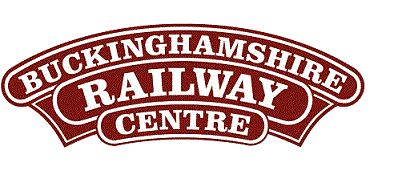
BRC Website Home
Quainton Virtual Stockbook - Where are they now?
Andrew Barclay 0-6-0ST No. 2138 Swordfish

BRC Website Home
Quainton Virtual Stockbook - Where are they now?
Andrew Barclay 0-6-0ST No. 2138 Swordfish

Photo: |
|
Some confusion arises as to the derivation of its name. The Quainton stockbook, "A Century on Rails" (1985), states that the name of this locomotive was derived from that of the wartime aircraft. Subsequent research by the locomotives current owner instead suggests that it took its name from a submarine Swordfish, a Class 4 boat (S Class), that was launched in November 1931 as fleet number N61, and lost in action in 1940 off Ushant. As an early casualty in the War, it was assumed Swordfish and sister engine Salmon, were named after submarines in a spirit of patriotism. One of three engines built in 1941, this example in December to the specification of Stanton Ironworks at a cost of £3290. Originally on loan to Stanton from the Ministry of Supply, it was finally purchased by them in 1947. On 1st January 1950 ownership passed to Stewarts and Lloyd, when they brought the quarries from Stanton ironworks. When new, Swordfish was sent to Glendon North Quarry and remained there until April 1957, when it was loaned to Glendon East Quarry for about seven months. It then returned to Glendon North and was put into storage. December 1961 saw Swordfish back at Glendon East, but during 1962 it was withdrawn from service altogether, having being replaced by a diesel. Between October 1955 and March 1956 Swordfish received a major overhaul at the quarry, acquiring the boiler from a similar locomotive, No. 1457 of 1914. It also lost its name at this time, instead gaining the Stewarts and Lloyd's fleet number 84. In August 1962 the locomotive was sold to Goodman Brothers of New Bradwell who intended to export it. The deal fell through, and so the engine remained in Goodman's yard until 15th August 1980 when it was delivered to Quainton, having being purchased by some Quainton members. During its stay in the scrap yard a great deal of damage was caused to the engine and many parts were lost. However, rebuilding was still considered possible, even if it would be an expensive and long drawn out process. Swordfish originally left Quainton for the Rutland Railway Museum, before moving to the Swindon & Cricklade Railway. Here extensive work was carried out on the brake linkages and wheel sets. One of the major hold-ups was that one of the connecting rods was missing, presumably from its time in the scrap merchants. Swordfish re-entered operation at the Swindon & Cricklade Railway in July 2016 after a ten-year restoration program. In 2022 Swordfish returned to the Buckinghamshire Railway Centre, steaming shortly after arrival back at Quainton, and participating in the May Steam Gala that year. Swordfish remained at Quainton until 9 November 2022 when the loco was moved to the Telford Steam Railway for their Polar Express season. Subseuquently on 16 February 2023 Swordfish departed to the Colne Valley Railway, initially on hire until October 2023, but later extended. The current plan is that Swordfish will remain at the Colne Valley until November 2024, When she will move to the Mid-Suffolk Railway for three months to the end of the current boiler certificate. Full details of the locomotive's movements may be found on its own facebook site. Reference: |
| Builder :- | Andrew Barclay | Date Built :- | 1941 | Works No. :- | 2138 |
| Running No. :- | 84 | Name :- | Swordfish | Wheel Arrangement :- | 0-6-0ST |
| Tractive Effort :- | 14, 303 lb | Boiler Pressure :- | 160 psi | Cylinder Dimensions :- | 14" x 22" |
| Weight :- | 33t 0c | Driving Wheel Dia. :- | 3' 5" |
Text © Quainton Railway Society / Photographs © Quainton Railway Society or referenced photographer
Email Webmaster
Page Updated: 24 June 2024